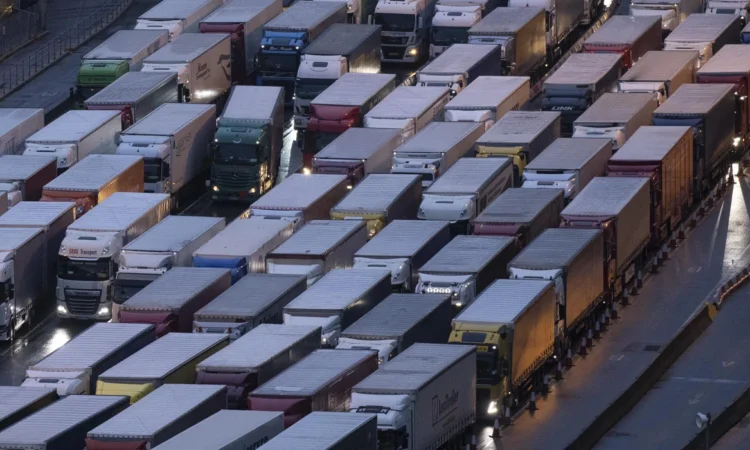The Inflation Reduction Act’s tax credits for electric passenger vehicles have garnered the most intense scrutiny. No shade to those tax credits — which are bringing a wave of battery and auto manufacturing to U.S. shores — but the tax credits to electrify medium- and heavy-duty transport could be an even bigger deal.
A new report from policy modeling shop Energy Innovation and shared exclusively with Protocol shows that the law’s tax credits could double or even triple the share of electrified trucks and vans used in fleets by 2030 compared to business as usual. That would pay huge dividends by cleaning up what is one of the dirtiest segments of the transportation sector in terms of carbon and air pollution that disproportionately affects disadvantaged communities.
There’s no precedent for a policy that could lead to that type of explosive growth in the commercial fleet sector. “The fact that the IRA includes a new commercial EV tax credit is, to my mind, a game changer,” Sara Baldwin, the director of electrification at Energy Innovation, said.
The commercial EV tax credits differ from the ones for passenger vehicles in a few crucial ways. The IRA includes tax credits of up to $7,500 for light- and medium-duty vehicles and $40,000 for heavy-duty trucks. Those credits don’t come with any requirements for where battery components and minerals can be sourced from or how much vehicles cost, both of which are facets for the passenger EV tax credits.
“The medium- and heavy-duty vehicle market is much more nascent,” when it comes to electric options, Baldwin said. “There’s a lot more opportunity for growth, as well as innovation.”
The Energy Innovation report modeled what the tax credits for both the vehicles themselves and charging infrastructure could mean for EV uptake. The IRA is expected to juice the share of new passenger battery EVs sales to as high as 29% by 2030, up from 21% under the status quo. The percentage of EVs on the road could reach 11% by 2030, an uptick of 2%.
But the market for battery-powered EVs in the light- and medium-duty category could explode. Without any additional policies, 17% of new sales would be battery EVs by 2030. With the IRA, though, that percentage could rise to as high as 38%. Heavy-duty electric truck sales could nearly triple due to the IRA, reaching 27% by 2030.
“As far as we’re aware, this absolutely is an unprecedented incentive,” Baldwin said. “Combine that with the fact that we now have billions of dollars flowing to charging infrastructure at the same time, what we’re doing is we’re unlocking both of those barriers: the up-front cost barrier and then the charging and range anxiety barrier.”
The latter is particularly important for long-haul trucks and delivery vehicles that have schedules to keep, and could help companies already looking at electrifying their fleets speed up the process. Some major businesses have already made major pledges to electrify their fleets. Amazon, for example, put in an order for 100,000 electric vans from Rivian and installed some of its own charging stations. The new tax credits could provide incentives for it and other major companies to make more EV purchases, including heavy-duty trucks, as well as make it easier for smaller companies to transition to electric fleets.
Regulating polluting vehicles could speed the transition up even further. The Environmental Protection Agency is considering new emissions standards for medium- and heavy-duty trucks, and setting more-stringent ones could act as a stick to the IRA’s carrots. States could also take a lead. On the heels of phasing out gas-powered car sales by 2035, California is considering banning diesel truck sales by 2040.
“You really can’t incentivize your way to clean vehicle fleets across the board,” Baldwin said. “Part of that is just because you need to make sure that the baseline is always moving in the direction of reducing emissions, and incentives alone aren’t going to achieve that goal.”


